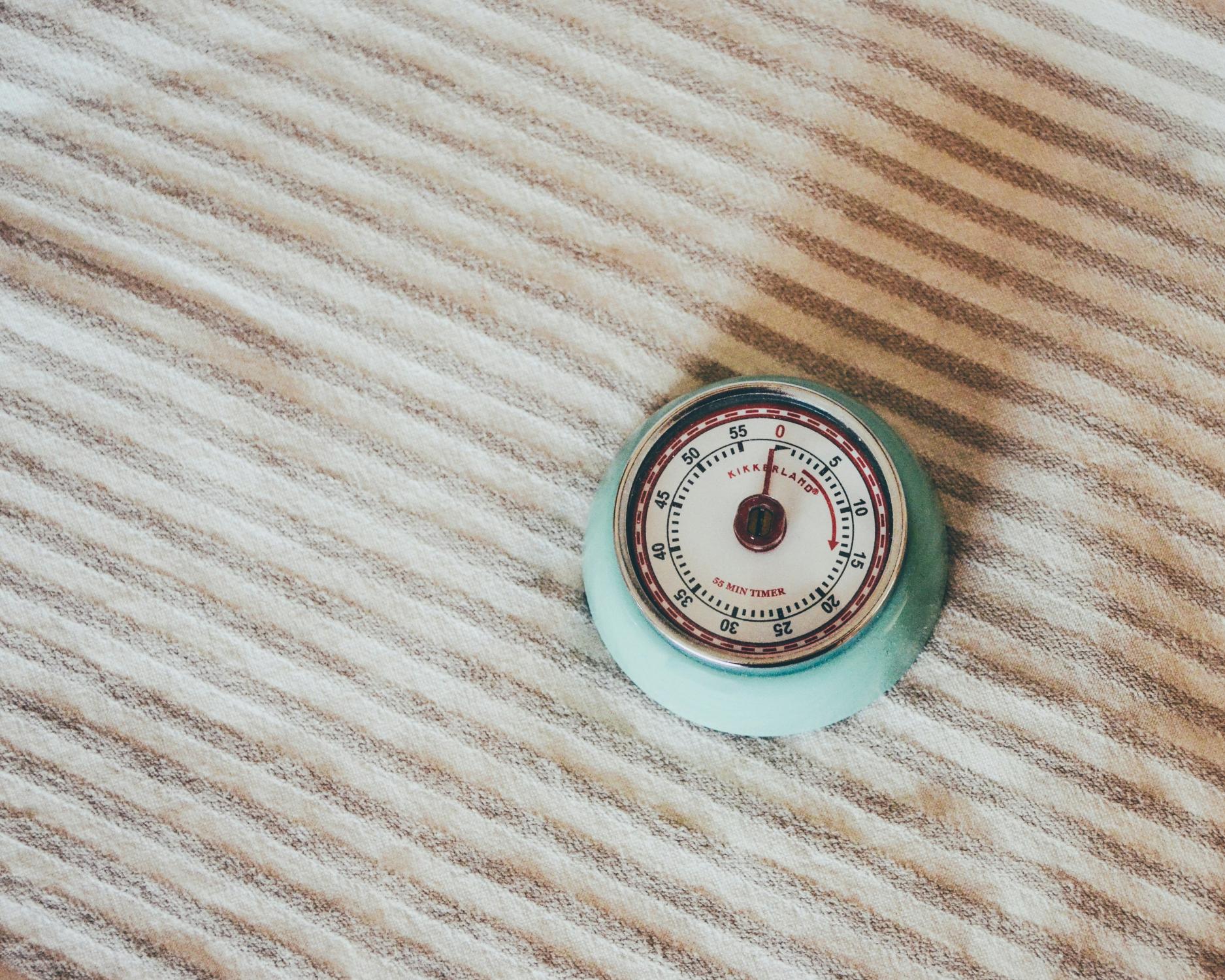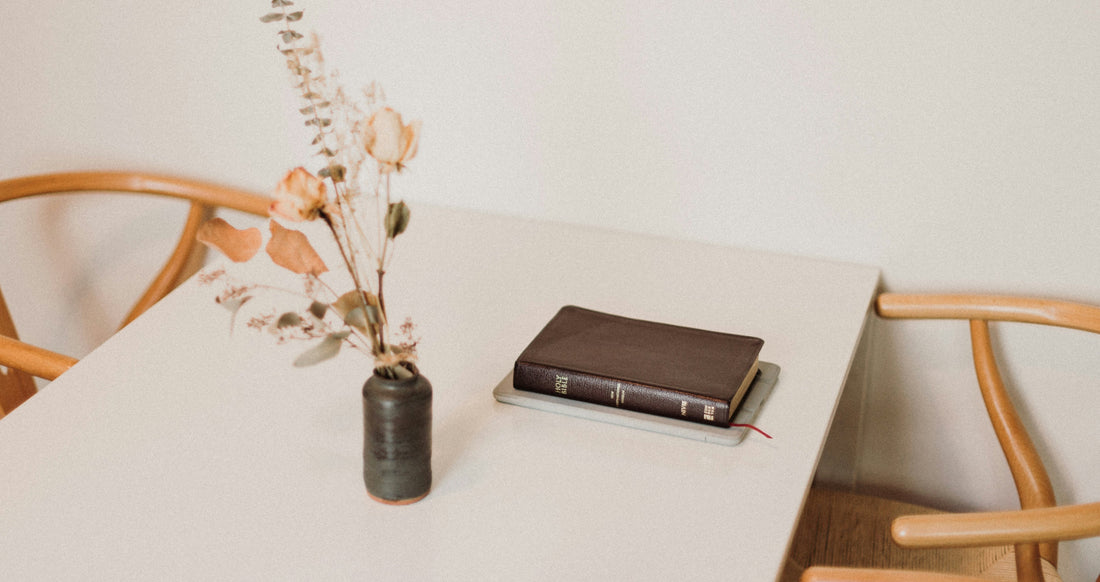When it comes to building spiritual habits, we often think of routines, schedules, or time-blocking. But what if your environment could do some of the work for you? In a recent conversation on the GoodKind Podcast, our team discussed specific, tangible items we keep around our homes that act as small nudges—reminders to practice our faith in everyday life. These aren’t elaborate systems or complicated structures. They’re simple, often ordinary things, placed with intention.
Here are six tangible tools mentioned in the episode that can help you or your family stay rooted in your faith.

1. Sticky Prayers – Pause and Pray Throughout the Day
A favorite in our home, Sticky Prayers are exactly what they sound like: textured stickers that will prompt you to pray throughout the day. It’s simple, visual, and interactive.
Sometimes we stick them on bathroom mirrors to remember a prayer request in the morning. Sometimes we put them on a water bottle or journal—wherever we’ll see them often.
It helps us turn fleeting thoughts into persistent prayers.
Ideas to try:
-
Order Sticky Prayers and begin using them to fuel your prayer life at home and on the go.
-
Write out prayers on sticky notes or index cards and tape them up around your house. ]
- Move them around from time to time to help you engage in different ways.

2. A Chalkboard for Prayer Requests – Faith in Sight
In one of our team member's homes, there's a chalkboard hung in the hallway that’s designated entirely for prayer requests. It’s not elaborate. Just a chalkboard and a list.
But because it’s visible, it acts like a spiritual bulletin board—reminding us what our family, friends, or community is praying for. It also creates an easy entry point for kids. They don’t have to sit down with a notebook or have all the words. They can just write: “Grandma’s surgery” or “My test on Friday.”
This small, tangible item helps keep our prayer life front and center.
Ideas to try:
-
Hang up a chalkboard or whiteboard in a central place in you home.
-
Update the chalkboard weekly during a family check-in.
-
Use it during dinner to prompt prayer time.
- Let your kids erase and celebrate the requests that have been answered.

3. Candles – Creating Sacred Moments
We light candles to make moments feel distinct. When we sit down to pray, read Scripture, or enter into a faith-focused activity, lighting a candle helps mark the shift. It signals to everyone: this time is set apart.
What’s beautiful about candles is how universal they are. It’s not about the brand or the scent—it’s about drawing attention to the moment. Candles slow us down. They center us. And they make even a 3-minute prayer feel like something sacred.
Ideas to try:
-
Light a candle at dinner and say one prayer as a family.
-
Use it during Sabbath or devotional moments.
- Let kids take turns lighting or blowing out the candle.

4. A Timer – Making Faith Manageable
Believe it or not, one of the best tools for faith practice in our home is a basic kitchen timer.
We use it to set short windows for prayer, reflection, or silence—especially with kids. There’s something helpful about giving spiritual practices a defined container. It makes them feel doable.
Two minutes of quiet is very different than saying “let’s be quiet now.” And kids—especially younger ones—respond well to knowing when something begins and ends.
Ideas to try:
-
Set a timer for 2 minutes of stillness before bedtime or mealtime.
-
Use it to build up your family’s prayer, Bible reading or other spiritual stamina slowly and consistently.
-
Let kids be in charge of pressing “start” and “stop.”

5. A Designated Bible Spot – Reducing Friction
One way we’ve made spiritual practices easier is by reducing friction. Instead of keeping our Bibles tucked away, we’ve found value in choosing a visible, accessible place to keep them—out in the open and ready to grab.
When your Bible lives in a spot where you see it every day (on a shelf, on a coffee table, on your desk), it becomes part of your rhythm without fanfare. No searching. No setup. Just reach and read.
Ideas to try:
-
Pick a specific table, shelf, or drawer to keep your Bible within reach.
-
Plug your phone in at night and place your Bible on top so it's the first thing you touch in the morning.
-
Let your kids each have their own Bible in their room or common area.
-
Keep it in the same spot where you drink coffee or start your morning.

6. A Comfortable Chair or "Faith Corner" – Creating a Cue
This isn’t about having a perfect space—it’s about having a consistent one. A comfortable chair or small corner of your house can become a physical cue for spiritual time.
Over time, your brain and body begin to associate that space with stillness, prayer, Scripture, or reflection. It’s the same principle as a favorite reading nook—it becomes a place where that specific kind of engagement feels natural.
Ideas to try:
-
Choose a chair and declare it your “quiet time” spot.
-
Put a small basket nearby with your Bible, notebook, or devotionals.
-
Invite your kids to create their own version of this—a “God spot” that feels theirs.
The Bottom Line
You don’t need a complete home makeover or a 10-step plan to create a spiritually rich environment. Sometimes all it takes is adding one small item to a space you already use. The key is visibility and intention: place things where you’ll see them, touch them, or be reminded of them in the flow of daily life.
These small, tangible tools can act as cues—subtle invitations to pause, pray, remember, or worship. They might not seem profound on their own, but over time, they shape the rhythms of your days.
Want to hear more ideas like this? Listen to the full episode on the GoodKind Podcast and start experimenting with tangible faith cues in your own home.

